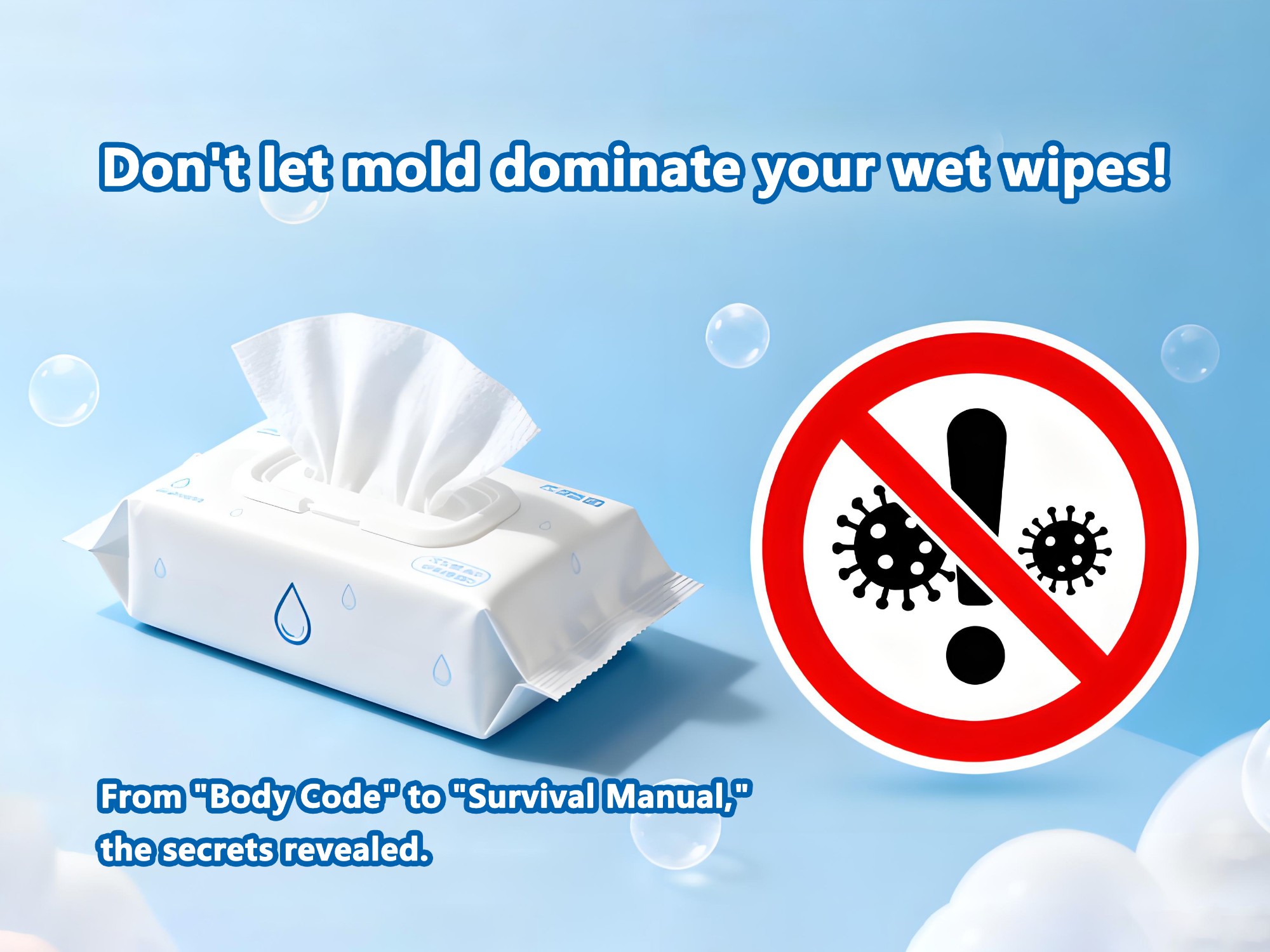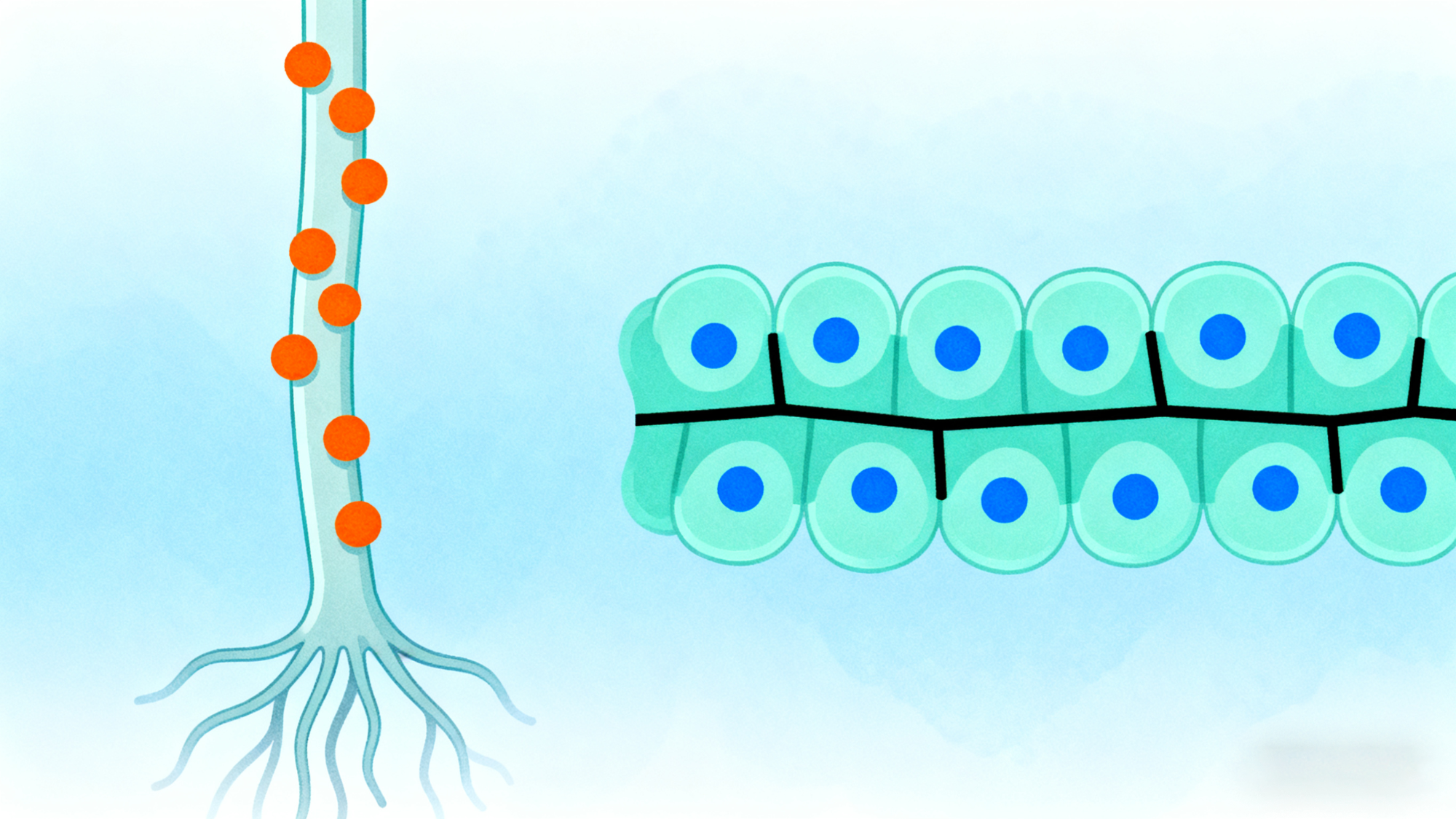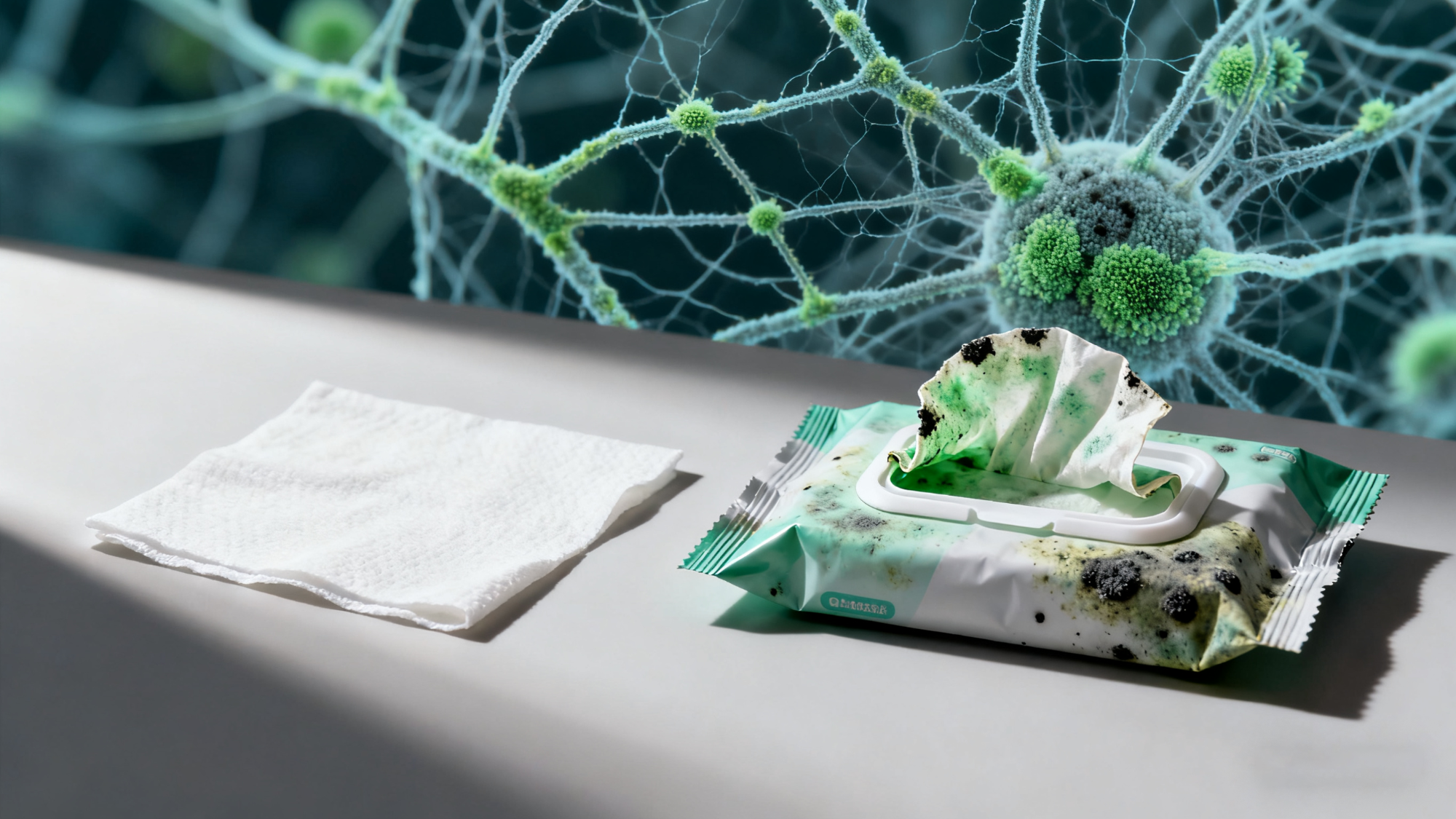
If you notice a layer of fuzz growing on the non-woven fabric in your wet wipes bag, or a green "pattern" spreading from the inside of the wipe cover, or if your wipes are moldy during the rainy season, these uninvited guests are actually mold. Mold is a general term for filamentous fungi belonging to the kingdom Fungi. They are called mold because they form fuzzy, web-like, cotton-like, or carpet-like mycelium when growing on a solid nutrient substrate.

The "Body Code" of Mold
Mycelium, the basic unit of mold's vegetative body, is formed by the germination of mold spores. Mold hyphae fall into two categories: one lacks septa, and the entire mycelium can be considered a multinucleate, single cell. Examples include the hyphae of lower species of molds, such as Rhizopus, Mucor, and Absidia, which lack septa. The other possesses transverse septa, with each segment representing a single cell, and the entire mycelium is composed of multiple cells. Most molds fall into this category.
If mold can be compared to a miniature factory, then the hyphae are its production lines, transport pipelines, and skeleton. These threads, as fine as 2–10 microns (1/5–1/10 the diameter of a human hair), can extend infinitely and branch arbitrarily like vines, ultimately forming a tangled mass of fuzzy "mycelium"—the "full picture" of mold. Mold colonies are typically 1–2 cm in diameter or smaller, with a loose texture that can appear fuzzy, flocculent, spiderweb-like, or carpet-like. Colonies vary in color, initially mostly white, then turning gray, green, black, or brown as they mature due to spore production. The color and structure of the colony's center and edges differ significantly. The aerial hyphae in the center are physiologically older and darker, while the hyphae at the edges are younger and lighter.

Why do wardrobes often grow mold during the rainy season, but rarely in the cold winter? In fact, mold growth is like a human vacation: it requires the right time, place, and people. They can't go without delicious food: they're natural foodies, and they'll feast on anything organic, including starch, fiber, and fat. They need to meet humidity standards: mold loves humidity, and the higher the humidity, the more they thrive, so bathrooms and basements are always popular spots. They need plenty of oxygen: most molds are oxygen-hungry, and sealed packaging can temporarily stifle their growth. They need the right temperature: 20-30°C is their comfort zone, which is why food is more prone to mold in the summer. They're not afraid of a bit of acidity: mold is more tolerant of acid than bacteria, and can thrive even in environments with a slightly acidic pH. They can also tolerate high levels of salt and sugar: some molds can even survive in pickles and jams, making them true "lovers of strong flavors."

The Dangers of Mold in Wet Wipes Among mycotoxins, the most feared mold, such as aflatoxins (a class of carcinogens), enter the food chain through contamination of grain and oil products, causing acute liver damage or long-term cancer risks. When animals ingest contaminated feed, the toxins accumulate in their meat, eggs, and milk, indirectly threatening human health. Mold thrives in humid environments (such as bathrooms and walls), forming visible "mold spots." This not only impairs the functionality of wet wipes but also releases large quantities of spores, mycelial fragments, and volatile organic compounds (MVOCs), which pollute indoor air. Long-term exposure to such mold-contaminated indoor environments can easily cause or exacerbate allergic reactions (such as rhinitis and asthma), respiratory discomfort (such as coughing and chest tightness), and other health issues (such as headaches and fatigue), seriously impacting the health and safety of residents and workers.
With this understanding, we can easily "counter" these issues:
1. The liquid in wet wipes must be treated with a mold inhibitor to inhibit mold growth, preventing these "little mold balls" from flourishing. 2. We recommend purchasing reputable brands and using wet wipes from reputable manufacturers.
3. Do not use wet wipes that appear moldy or black. Seal them and dispose of them properly.
4. Wet wipes are easily contaminated after being opened, so they should be used within a few days.
5. Wet wipes typically have a shelf life of two years; do not use expired wipes.






 English
English
 USA
USA
 西班牙语
西班牙语
 俄罗斯
俄罗斯
 葡萄牙
葡萄牙
 印尼
印尼
 巴基斯坦
巴基斯坦
 尼日利亚
尼日利亚
 孟加拉
孟加拉
 墨西哥
墨西哥
 越南
越南
 日本
日本
 韩国
韩国

